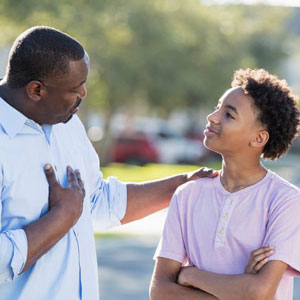How to Handle Strains & Sprains
Medically reviewed by: Larissa Hirsch, MD
What Are Strains and Sprains?
- Strains are injuries to muscle or tendons (which connect muscle to bone).
- Sprains involve a stretch or a partial tear of ligaments (which connect two bones).
Sprains and strains happen more often in teens than in younger children.
What Are the Signs & Symptoms of Strains and Sprains?
- pain
- swelling and bruising
- warmth and redness of the injured area
- trouble moving the injured part
What Should I Do if My Child Has a Strain or Sprain?
- Make sure your child stops activity right away.
- For 2–3 days, to help with pain and swelling:
- Have your child rest the injured area.
- While your child is awake, place a bag of ice wrapped in a towel on the area for 15–20 minutes, 3–4 times a day. Do not put ice directly on the skin.
- If the sprain or strain is on an arm, leg, hand, or foot, wrap the injured area loosely in an elastic bandage. But do not wrap if the area is on the head, neck, or torso (chest or belly).
- Keep the injured area above heart level by resting it on a pillow.
- Give your child ibuprofen or acetaminophen for pain and swelling, but for no longer than 1 week.
When Should We Get Emergency Medical Care for a Strain or Sprain?
See the doctor or go to the ER if your child has:
- severe pain when the injured part is touched or moved
- continued trouble bearing weight
- more bruising
- numbness or a feeling of "pins and needles" in the injured area
- a limb that looks "bent" or misshapen
- signs of infection (increased warmth, redness, streaks, swelling, and pain)
- a strain or sprain that doesn't seem to be improving after 5 to 7 days
What Can Help Prevent Strains and Sprains?
To avoid sprains and strains, it can help for kids to:
- Warm up properly and stretch before and after exercising or playing sport.
- Always wear proper sports protective equipment.
- Work with a sports trainer to make sure they don’t overtrain.
- Wear sneakers that fit properly and offer good support.
- Get plenty of physical activity to keep muscles strong.
- Stay at a healthy weight.
- Avoid carrying very heavy objects. If they use a backpack, try to keep it light. They should use both shoulder straps when wearing the backpack.
Medically reviewed by: Larissa Hirsch, MD
Date reviewed: November 2024


